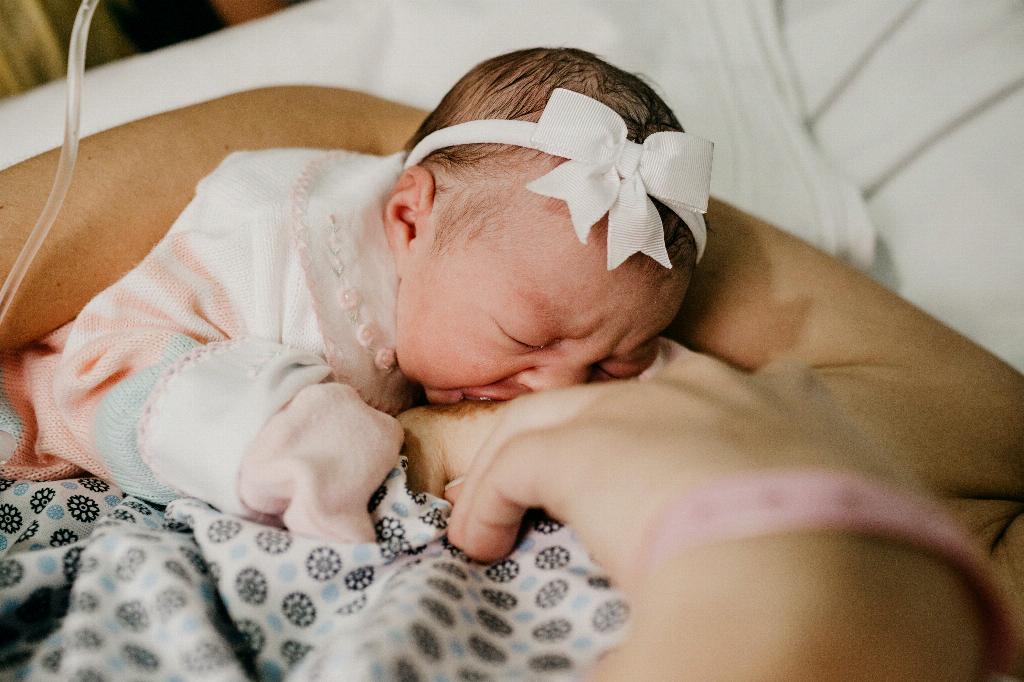Before diving into the treatments for a bleb while breastfeeding, it’s essential to understand what a bleb actually is. A bleb is a tiny white spot on the nipple that can be caused by a clogged milk duct. It can make breastfeeding uncomfortable and even painful for some nursing mothers.
Saline Soak: A Simple Solution
One common home remedy for treating a bleb while breastfeeding is a saline soak. This involves mixing 1/4 teaspoon of salt with a cup of water and soaking the affected nipple in this solution. The saline soak can help soften the blocked pore and potentially ease the discomfort caused by the bleb.
Coconut Oil or Olive Oil: Natural Remedies
Another recommended at-home treatment involves applying a cotton ball soaked in coconut oil or olive oil to the nipple with the bleb. These natural oils can help soften the area around the bleb, making it easier for the blockage to clear up and alleviate any associated pain.
Warm Compress: A Soothing Technique
Using a warm compress on the affected breast before nursing or pumping can also be beneficial in treating a bleb while breastfeeding. The warmth can help loosen the blockage, making it easier to remove while feeding your baby or expressing milk.
Gentle Massage: Promoting Milk Flow
Gently massaging the affected breast towards the nipple during breastfeeding or pumping can help encourage milk flow and potentially dislodge the blockage causing the bleb. Be cautious not to apply too much pressure, as this could lead to further discomfort.
Optimal Latch: Ensuring Proper Attachment
Ensuring a proper latch while breastfeeding is crucial in preventing future blebs and promoting overall breastfeeding success. A good latch can help facilitate effective milk removal, reducing the likelihood of blocked ducts that can contribute to the formation of blebs.
Nursing Positions: Finding Comfort and Relief
Exploring various nursing positions can also aid in treating a bleb while breastfeeding. Trying different positions, such as the laid-back nursing position or side-lying position, can help alleviate pressure on the affected area and promote milk flow.
Hydration and Nutrition: Supporting Breast Health
Staying hydrated and maintaining a nutritious diet is essential for overall breast health and can contribute to the prevention and treatment of common breastfeeding issues like blebs. Drinking an adequate amount of water and consuming nutrient-rich foods can benefit both you and your baby.
Consulting a Healthcare Provider: Seeking Professional Guidance
If home remedies and self-care techniques do not alleviate the symptoms of a bleb while breastfeeding, it may be helpful to consult a healthcare provider for further evaluation and guidance. A lactation consultant or healthcare professional can offer personalized advice and support.
Staying Positive: Embracing the Journey
Dealing with a bleb while breastfeeding can be challenging, but it’s important to stay positive and patient throughout the process. Remember that you are not alone in facing breastfeeding difficulties, and seeking support from healthcare providers, lactation consultants, or fellow mothers can make a significant difference.
Self-Care and Rest: Prioritizing Well-Being
Amidst the demands of breastfeeding and caring for a newborn, it’s crucial to prioritize self-care and rest. Taking time for yourself, practicing relaxation techniques, and getting adequate rest can help promote healing and overall well-being as you navigate the challenges of breastfeeding with a bleb.
Monitoring Progress: Observing Changes
As you implement various treatment strategies for a bleb while breastfeeding, it’s important to monitor your progress and observe any changes in symptoms. If you notice improvements or worsening of the condition, consider adjusting your approach or seeking professional advice accordingly.
Conclusion: Navigating Bleb Treatment with Care
In conclusion, treating a bleb while breastfeeding involves a combination of home remedies, gentle techniques, proper latch, hydration, and seeking professional guidance when necessary. By approaching the management of a bleb with care, patience, and a proactive mindset, you can effectively address this common breastfeeding issue and continue to nurture your bond with your baby.

